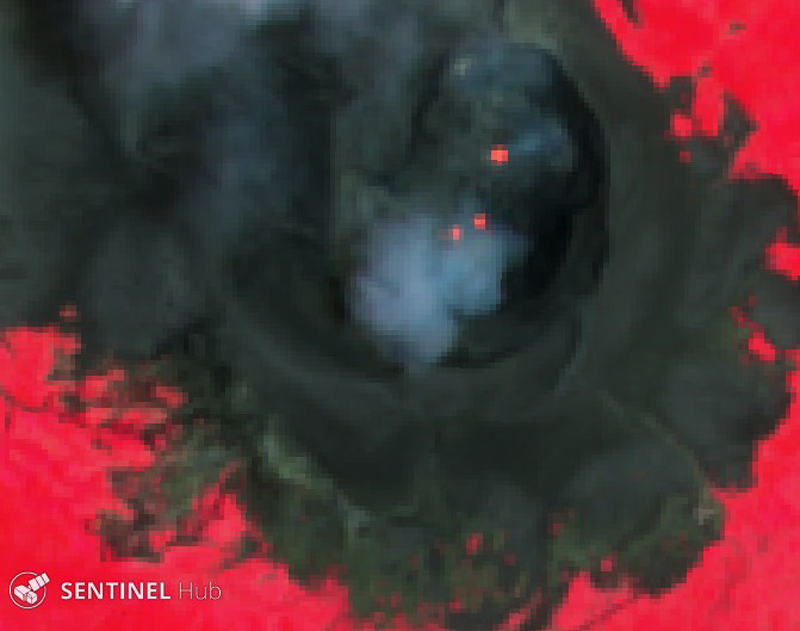Report on Yasur (Vanuatu) — February 2019
Bulletin of the Global Volcanism Network, vol. 44, no. 2 (February 2019)
Managing Editor: Edward Venzke.
Research and preparation by Paul Berger.
Yasur (Vanuatu) Eruption continues with ongoing explosions and multiple active crater vents, August 2018-January 2019
Please cite this report as:
Global Volcanism Program, 2019. Report on Yasur (Vanuatu) (Venzke, E., ed.). Bulletin of the Global Volcanism Network, 44:2. Smithsonian Institution. https://doi.org/10.5479/si.GVP.BGVN201902-257100
Yasur
Vanuatu
19.532°S, 169.447°E; summit elev. 361 m
All times are local (unless otherwise noted)
According to the Vanuatu Meteorology and Geo-Hazards Department (VMGD), which monitors Yasur, the volcano has been in essentially continuous Strombolian activity since Captain Cook observed ash eruptions in 1774, and undoubtedly before that time. VMGD reported that, based on visual observations and seismic data, activity continued through January 2019, with ongoing, sometimes strong, explosions. The Alert Level remained at 2 (on a scale of 0-4). VMGD reminded residents and tourists to remain outside the 395-m-radius permanent exclusion zone and warned that volcanic ash and gas could reach areas influenced by trade winds.
Thermal anomalies, based on MODIS satellite instruments analyzed using the MODVOLC algorithm, were recorded 6-15 days per month during the reporting period, sometimes with multiple pixels. The MIROVA (Middle InfraRed Observation of Volcanic Activity) volcano hotspot detection system, also based on analysis of MODIS data, detected numerous hotspots every month. Active crater vents were also frequently visible in Sentinel-2 satellite imagery (figure 50).
 |
Figure 50. Sentinel-2 satellite color infrared image (bands 8, 4, 3) of Yasur on 17 November 2018 showing at least three distinct heat sources in the crater. Courtesy of Sentinel Hub Playground. |
Geological Summary. Yasur has exhibited essentially continuous Strombolian and Vulcanian activity at least since Captain Cook observed ash eruptions in 1774. This style of activity may have continued for the past 800 years. Located at the SE tip of Tanna Island in Vanuatu, this pyroclastic cone has a nearly circular, 400-m-wide summit crater. The active cone is largely contained within the small Yenkahe caldera, and is the youngest of a group of Holocene volcanic centers constructed over the down-dropped NE flank of the Pleistocene Tukosmeru volcano. The Yenkahe horst is located within the Siwi ring fracture, a 4-km-wide open feature associated with eruption of the andesitic Siwi pyroclastic sequence. Active tectonism along the Yenkahe horst accompanying eruptions has raised Port Resolution harbor more than 20 m during the past century.
Information Contacts: Geo-Hazards Division, Vanuatu Meteorology and Geo-Hazards Department, Ministry of Climate Change Adaptation, Meteorology, Geo-Hazards, Energy, Environment and Disaster Management, Private Mail Bag 9054, Lini Highway, Port Vila, Vanuatu (URL: http://www.vmgd.gov.vu/, https://www.facebook.com/VanuatuGeohazardsObservatory); Hawai'i Institute of Geophysics and Planetology (HIGP) - MODVOLC Thermal Alerts System, School of Ocean and Earth Science and Technology (SOEST), Univ. of Hawai'i, 2525 Correa Road, Honolulu, HI 96822, USA (URL: http://modis.higp.hawaii.edu/); MIROVA (Middle InfraRed Observation of Volcanic Activity), a collaborative project between the Universities of Turin and Florence (Italy) supported by the Centre for Volcanic Risk of the Italian Civil Protection Department (URL: http://www.mirovaweb.it/); Sentinel Hub Playground (URL: https://www.sentinel-hub.com/explore/sentinel-playground).

